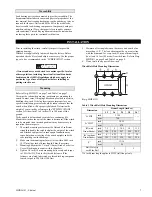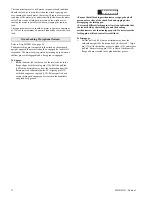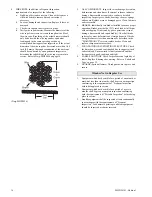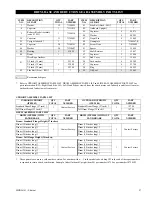
MHD56181 - Edition 1
19
Lower (payout) speed is
slower than lifting (haul-
in) speed.
Control valve may be restricted in its
travel.
Check the travel of the control valve spool. The spool travel should be
the same in both directions.
Oil may be too thick, causing a high
resistance to rotation at the brake
plates causing relief valve to by-pass.
Change to lighter weight oil in the hydraulic system.
Damaged ‘O’ Ring in brake assembly. Disassemble, inspect and replace brake ‘O’ Rings. Refer to
manufacturer’s literature for service/maintenance requirements. If
allowed by manufacturer, test brake by attaching a pressurizing
instrument, such as a ‘Porta-Power’, to brake port and pressurize to
300 psig (2069 kPa/20.7 bar) (or allowable maximum pressure). Allow
brake to hold pressure for an adequate period of time to ensure
pressure does not bleed down.
Automatic Disc Brake:
Brake fails to release.
Low oil supply pressure.
Ensure the oil pressure at the inlet to the disc brake is at least 300 psig
(2069 kPa/20.7 bar).
Worn or damaged piston seals.
Inspect the brake breather. If oil escapes from the brake breather when
attempting to release the brake, the brake seals must be replaced.
No release pressure at the brake port.
Check line between motor and brake.
Sticking brake piston.
Apply 300 psig (2069 kPa/20.7 bar) to the brake release port and check
for brake disc movement. If brake discs do not move, disassemble and
inspect the disc brake as described in the manufacturer’s literature.
Automatic Drum Brake:
Brake cylinder will not
release.
Drum brake out of adjustment.
Adjust drum brake to maintain correct cylinder stroke.
Damaged cylinder seals.
Replace or repair cylinder.
Plugged return valve.
Check return valve.
SYMPTOM
CAUSE
REMEDY









































